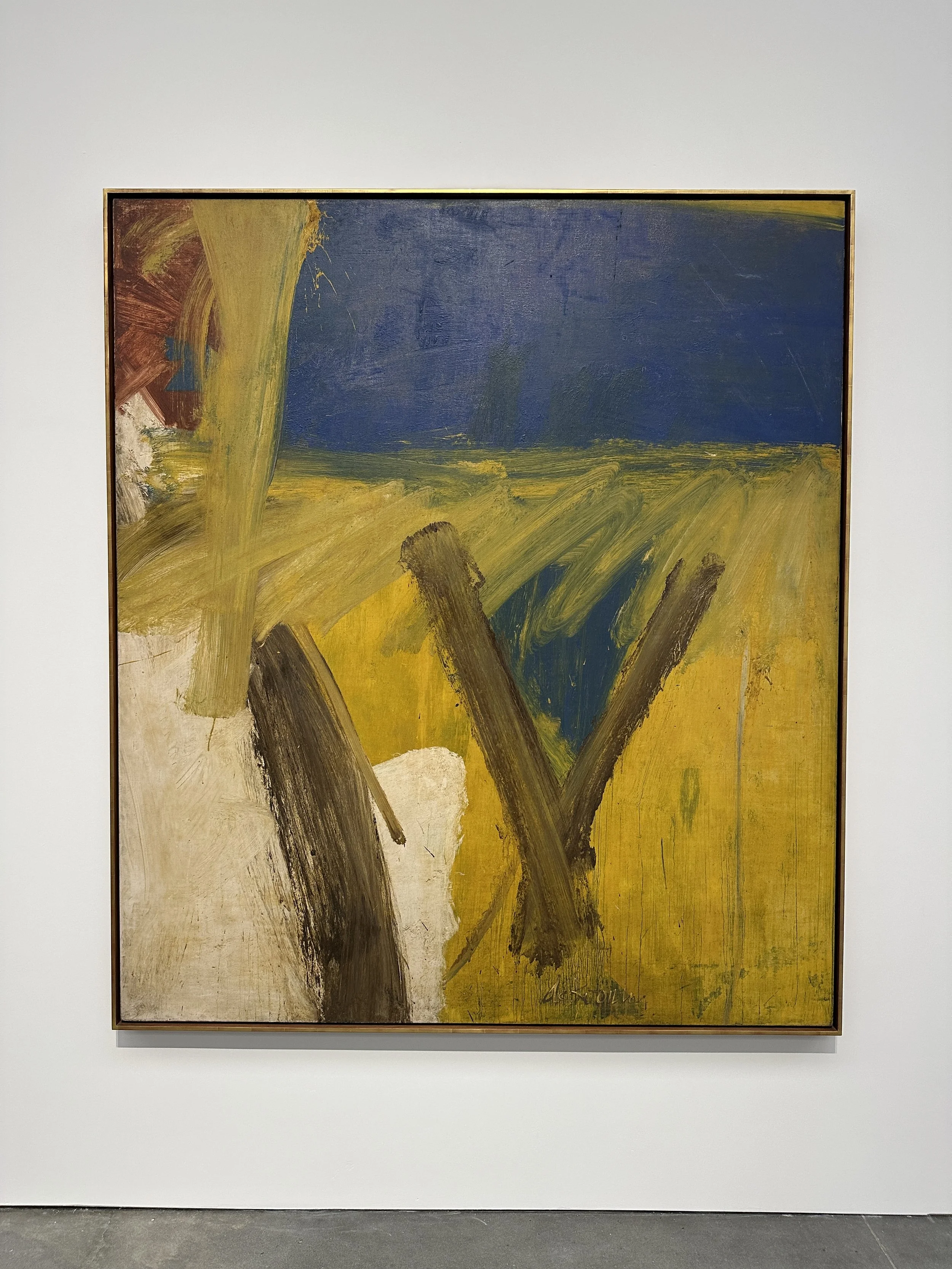Willem de Kooning: Endless Painting
A Viewing Room Experience
Gagosian, 555 West 24th Street, New York
Through July 11, 2025
We’ve always been fans of Willem de Kooning, and if you’ve ever stepped foot in a modern art museum, you’ve probably come face to face with one of his unruly, electric canvases. His work is unforgettable—part physical act, part emotional excavation. So when Gagosian opened Endless Painting, we made sure to catch it before it closes this upcoming week.
Suburb in Havana, Oil on canvas, 1958
We always enjoy exhibitions that span an artist’s lifetime. They give you a rare opportunity to witness the evolution of thought and technique over time—not just stylistic shifts, but the push and pull of an artist grappling with their own medium. While Endless Painting isn’t an enormous show (24 works in total), it’s a thoughtfully curated survey. The selection—spanning from the 1940s to the 1980s—acts like a condensed retrospective, guiding viewers through the emotional terrain and formal experimentation of de Kooning’s career.
Curator Cecilia Alemani took a non-linear approach, placing early and late works in conversation rather than organizing them chronologically. This decision creates visual and thematic echoes across time. A distorted female figure from the 1950s sits near a 1980s canvas made of airy loops and ribbons, and suddenly, you begin to see connections between the flesh and the ether. De Kooning’s signature language—gestures, color palettes, and recurring body parts—feels fluid and expansive, even across decades.
We also noticed how, as de Kooning aged, his paintings became increasingly subtle. The aggressive lines and thick textures of his earlier works gave way to softer, more fluid compositions. There were fewer marks, less visible struggle on the canvas—but the color remained luminous and intentional. That shift made the late works feel no less powerful—just more distilled, more meditative. In this arrangement, you can really see that transformation unfold not as a decline, but as a refinement, a quieting of the noise without losing the vibrancy that always defined his work.
One of the most fascinating aspects of de Kooning’s process was his tendency to return to the same canvas repeatedly. He was known to trace elements from earlier compositions onto vellum so that he could reintroduce them in new works. Some paintings were rotated during their making, their final orientation a result of long-term improvisation. That kind of reworking isn’t just technical—it reflects a mindset of constant reinvention. He built a flexible visual vocabulary through this revisiting and revision, one that remained rooted in figuration even as it leaned into abstraction.
The Moraine, Oil on paper mounted on masonite, 1947
As Alemani puts it, de Kooning was “a restless explorer of the canvas.” His work feels like a continuous interrogation of what painting could be—not just an image, but a process, a presence. That’s part of what makes his late work so compelling. While his health was in decline in the 1980s, his output remained vigorous. The marks are looser, more lyrical, but still unmistakably his. There’s a sense that he wasn’t trying to resolve anything, but rather letting the work breathe on its own.
The title Endless Painting reflects this ethos perfectly. De Kooning didn’t believe in “finishing” a painting in any traditional sense. He often chose to simply “stop,” letting the work exist in a state of suspended motion, as if it might start evolving again at any moment. In that way, the show isn't just about what he painted—it’s about how he thought through painting, how he used it to stretch the limits of the medium itself.
Two sculptures—Clamdigger and Standing Figure—anchor the show in surprising ways. They have the same muscularity and spontaneity as his paintings, but rendered in bronze. Seeing them here adds weight—literally and figuratively—to the argument that de Kooning was always seeking new ways to inhabit space, whether with brush or clay.
This marks Gagosian’s sixth solo exhibition of de Kooning’s work since 1987, and it comes with a newly published, fully illustrated catalogue featuring essays by Alemani and John Elderfield (who curated de Kooning: A Retrospective at MoMA). Earlier this spring, Alemani also hosted a conversation with artists John Currin, Jenny Saville, and Dana Schutz, exploring how de Kooning’s improvisational process and expressive intensity continue to influence contemporary painters.
If you’re in New York, don’t miss this final week. Endless Painting is more than a career survey—it’s an invitation to witness an artist in constant motion, always undoing and redoing, never settling. In a time when so much art feels polished and over-planned, de Kooning’s chaos feels refreshingly alive. And if you’re unable to see the show in person, we hope this viewing room experience offers some insight into the exhibition—and a glimpse into the enduring brilliance of Willem de Kooning’s artistry.











![[No title], oil on canvas, 1978](https://images.squarespace-cdn.com/content/v1/648df09ed6448545d1f49039/1751835828450-T69JDLL27NZYXE3O6HM8/IMG_7582.jpg)



